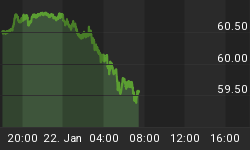Earlier this year, I predicted that the 2009 rally in U.S. stocks could bring the Dow Jones Index as high as 10,000. It looks like that level has been achieved. If, at this point, the index reverses course, I would have made a fairly good prediction.
However, it is important to get beyond the charts and look at the fundamentals. The furious six-month rally in the stock market has certainly not been mirrored by the economy as a whole. Instead, the country remains in recession, with unemployment continuing to rise and corporate earnings continuing to decline. This has pushed up trading multiples to the point that where value is now a distant memory. How could the stock markets have recovered so strongly in the face of economic recession?
First, this rally is mostly about the financial sector. The U.S. government decided that, no matter what the cost to the citizen, the major banks had to be saved. Bank losses were transferred to public books and unprecedented funds were showered on the banks to keep them solvent. Bank borrowing costs were reduced to near zero and, for the first time, interest was paid on reserves held at the Fed. Many of these banks were designated as 'too big to fail,' so they became a nearly risk-free bet.
The result: bank profits skyrocketed. Just today, JP Morgan reported that profits surged sevenfold from the second to the third quarter of this year! In fact, over the past six months, stock performance of financial sector firms was 66% better than the S&P 500 as a whole.
Second, the rally is mostly inevitable bounce. In the third quarter of 2008, in the face of collapsing stock and commodity markets, investors piled into cash instruments such as Treasuries. However, once the crisis appeared to pass, the same investors fled these zero-return 'investments' back into corporate debt, and then equities. Such massive fund flows have provided the tide upon which the current rally is based.
Third, despite the fact that the economy is in recession and corporate earnings are falling, government officials have been furiously attempting to boost market sentiment. They have been strongly supported by Wall Street cheerleaders in the media, with statements such as "earnings came in ahead of estimates" and "we see recovery in the next quarter."
Finally, even shell-shocked private investors have been drawn into equities, seemingly desperate to make good their losses of the past year. Normally, such a surge in private investment would presage a fall in markets. All the while, despite extensive new government hiring, U.S. unemployment has risen to an official level of 9.8 percent, and retail sales have fallen. In fact, the real rate of unemployment has reached almost 20 percent!
Meanwhile, the U. S. dollar continues to plunge, taking a large bite out of the true gains made by the surging Dow. U.S. interest rates are likely to rise, making bond and stock markets increasingly dangerous. In other words, to the extent that the rally persists, it appears to be growing longer in the tooth. But can as much be said for similar rallies happening around the world?
The worrying economic and financial conditions in America are in stark contrast to those of countries such as Brazil, Russia, India and China (BRIC), and those such as Canada, Australia and New Zealand (CAN), who supply the BRIC countries with much of their raw materials. Some American investors have indeed increased their exposure to BRIC-CAN stock markets. However, in view of the real health and strength of these economies relative to those of the United States, it is surprising how under-weighted they remain in most Americans' portfolios.
It's best to rebalance before this 'rally' is declared dead. Though troubling for their irrationality, situations like these can be very profitable for the fundamental-focused investor.
For a more in-depth analysis of our financial problems and the inherent dangers they pose for the U.S. economy and U.S. dollar, read Peter Schiff's 2008 bestseller "The Little Book of Bull Moves in Bear Markets" and his newest release "Crash Proof 2.0: How to Profit from the Economic Collapse." Click here to learn more.
More importantly, don't let the great deals pass you by. Get an inside view of Peter's playbook with his new Special Report, "Peter Schiff's Five Favorite Investment Choices for the Next Five Years." Click here to dowload the report for free. You can find more free services for global investors, and learn about the Euro Pacific advantage, at www.europac.net.
















